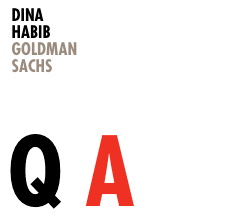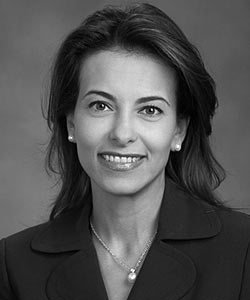Sponsors
As Director of Global Corporate Engagement for Goldman Sachs, Dina Habib Powell oversees the 10,000 Women initiative, a five-year drive to provide 10,000 underserved women around the world with a business and management education.

- Tell me about the origins of 10,000 Women -- what was the impetus behind starting it?
- 10,000 Women was born out of Goldman Sachs research which found that investing in women can lead to real economic growth. By providing business and management education to women in emerging economies, we are not only able to drive economic growth but also foster the multiplier effect that investing in women has been proven to create. Women are more inclined to invest their success in those around them, which is often the health, education and wellbeing of their families.
- How do you find and qualify women for the program -- and what do you expect of them?
- 10,000 Women is a network of local partners in more than 20 countries. The criteria for admission is tailored to each country. Our academic partners deliver 10,000 Women certificate pro grams that are localized and culturally relevant. Depending on the environment, women attend classes from 4 to 12 months before graduating from the program. The curriculum is designed to be practical yet ambitious and tailored to the needs of an entrepreneur -- how to write a business plan, access capital and manage staff. The classroom work is just one step in the linked pipeline of services that comprise 10,000 Women. After graduation, the women entrepreneurs are supported with mentoring and networking services, along with links to capital.
- One thing that's intriguing about the program -- you carefully measure and track the statistics, yet you also focus on the individual stories of the people who take part. Can you tell me about a personal story from this program that has moved you?
- Measurement is core to 10,000 Women. We track all of the women who go through the program through dedicated staff on the ground. We are able to use the information the women provide us with, in real time, to refine and improve program delivery. But the results of this program cannot adequately be represented by numbers and statistics. It is the stories of the students -- their triumphs and struggles -- that provide the real story of 10,000 Women. One story that has really stuck with me is that of Ayo Megbope from Lagos, Nigeria. Ayo started a catering business, No Leftovers Nigeria Ltd., in 2007 with less than $10. Through 10,000 Women, Ayo learned about market segmentation and became a skilled negotiator. Since graduating, No Leftovers Nigeria Ltd. has increased its revenues fivefold, and while the business started with just Ayo’s vision, it now employs six permanent employees and she has moved her kitchen out of her house and into a commercial space.
- What are some of the statistics that most surprised you?
- We are really encouraged by the program’s initial results. 70% of surveyed women report revenue growth and 50% have hired new employees since graduating from the program. Although this growth is impressive, we were also delighted to see that, on average, 10,000 Women graduates are mentoring or teaching business skills to 14 additional women and girls in their communities. By paying it forward, these women are extending the reach of this program to schools, households and villages throughout the developing world.
- What's your dream for the next stage of the program?
- Our hope is that 10,000 Women will spark a movement around the world, encouraging all sectors to focus on the critical value of investing in women. By providing women with tools and support they need to grow their businesses, we have seen how they create more job and bring more wealth into their communities -- all of which leads to healthier and bet- ter educated societies.

